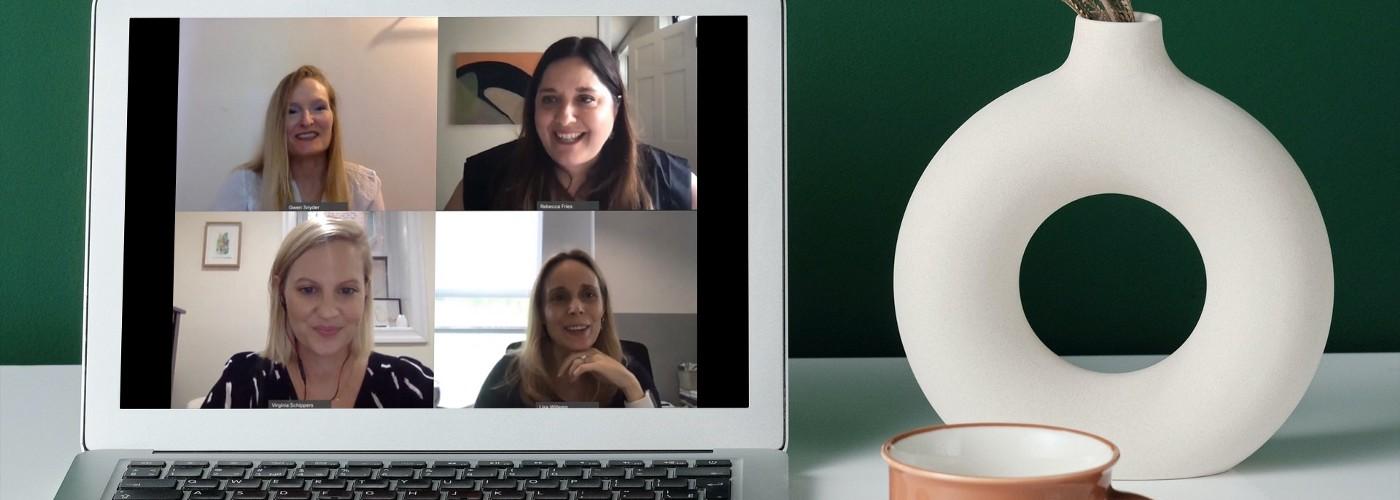Technical Assistance: A Game Changer for Gender Lens Investing?
Image

This post was written by Lauren Yang, USAID INVEST Communications.
Gender Lens Investing has gained momentum as a means to push for a more equitable spread of capital, generating much-needed financial returns and benefits for women. However, the need goes beyond just getting capital into the hands of women — how can businesses make gender equity not merely an add-on, but a fully integrated part of their operations?
CARE Enterprises, AlphaMundi Foundation, and Value for Women are leading the way in aligning investment with gender-smart technical assistance (TA) to help businesses and investors identify and incorporate strategies that allow them to better serve women as employees, customers, and entrepreneurs. In the latest installment of INVEST’s FINsights webinar series, investment advisor Value for Women and impact investors CARE Enterprises and AlphaMundi Foundation shared their secrets to success and vision for gender-smart TA as a means to making gender equity a global business standard.
These quotes have been edited for length and clarity.
WHY gender-smart technical assistance?
Virginia Schippers, Principal, CARE Enterprises: Gender-inclusive business practices contribute both to strong impact outcomes for women — better pay equity, career advancement opportunities, increased quality and access to products, higher household savings — as well as business resilience and profitability. But despite the clear business case, small and growing businesses rarely have the capacity or expertise to understand how to apply these gender-smart business practices and policies on their own. So CARE is taking the expertise it has honed implementing these practices on more traditional development programs and applying it to an impact investing strategy where we work with investee businesses.
Lisa Willems, Managing Director, AlphaMundi Foundation: AlphaMundi has been trying to do this gender work since 2016, but for us and a lot of other investors, it’s hard to run this sort of strategy off the balance sheet of a small fund. So there’s an issue of human resources bandwidth and lacking the financial resources to do this type of work, both at the entrepreneur and investor level. Also, a big issue that we encounter with other investors and entrepreneurs is the mindset that gender is just an HR issue. It takes time, education, and resources to bring entrepreneurs along on this journey and start to build the case that, by doing this type of work, it’s just better business — it will enhance your social and financial returns, as well as bring other investors to the table.
WHO is involved?
Rebecca Fries, CEO and Founder, Value for Women: We see multiple opportunities for investors to apply a gender lens in their work — we’re talking about impact investors and fund managers largely working in the impact space. There’s a really big missed opportunity to think about gender within existing portfolios in a more holistic, 360 manner: helping investment firms think about the internal workings of their organizations, the investment process and how they source and exit deals, and applying a gender lens to that decision-making process and investment thesis.
When we choose the businesses that get access to this support, it’s about selecting based on specific criteria — and it doesn’t always mean choosing the business that’s already doing great on gender. How motivated is the business to do something on gender? What is their specific motivation? What change do they want to see? How willing are they to put some skin in the game and actually invest their own time and resources to make this sustainable and effective?
WHAT does it take?
Fries: We find that a blend of training and TA work well together, with the business in the driver’s seat. That often means not necessarily being driven by the investor’s agenda or our agenda, but really working with the business to set their own goals and targets and carrying that out together. A lot of times, these are start-ups in various stages of growth, so we need to be flexible and adaptive to the SMEs’ changing needs. Having the engagement and buy-in of senior management is essential to getting the business to participate and get other champions in the business on board. Being able to demonstrate quick wins to organizations and helping them spot a tangible change early on can generate future activities and success.
We’re learning a lot about the effectiveness of this approach, which is very hands-on and very deep, and — you can read between the lines — a bit costly. That’s the elephant in the room here, it’s a costly intervention. We’re trying to break down the TA process and figure out which pieces can be more automated, less hands-on, and still have impact. On the heels of our work with AlphaMundi Foundation and others, we’ve been able to pilot the way that we’re asking businesses specific questions and making recommendations; some of that can be automated, which is a direct path to a pretty massive scale of a specific part of TA. We’re also experimenting with some light-touch helpdesk models and other tools (like employee satisfaction surveys) that can serve as litmus tests and proxies.
HOW do you make the case for gender-smart TA to investors, enterprises, and other private sector actors?
Schippers: CARE’s experience has shown that there’s a strong business case, in addition to the impact case. Gender-based violence and sexual harassment rates in the workplace in Southeast Asia (where our first fund is investing) are extremely high. One in three women experience harassment in factories in the region, and women in Vietnam who experience domestic violence earn 35 percent less due to productivity and work time lost. Companies we have worked with that have put in place stronger sexual harassment and gender-based violence prevention and response systems have found that these policies and practices more than pay for themselves. In working with large companies and factories that serve large companies (like Levi Strauss and Gap), we’ve found that women reported a significant reduction in sexual harassment, while the companies reported increased productivity and decreased turnover from female employees.
Willems: When assessing the impact of TA on the business and investor side, we’re typically looking at outcome measures like HR metrics and sales or collections, for example, HR retention, turnover, employee satisfaction, and other data collected via survey or quarterly staffing headcounts disaggregated by gender. If you’re doing an intervention with a sales or marketing team, we’re looking at an uptick in sales. We worked with a pay-as-you-go biogas company on collection rates and the effectiveness of women and men on getting the collection rates up.
From an investor standpoint, what I’m hoping happens is that this is akin to ESG ten or twenty years ago. It will become recognized that this is better business. If we can simultaneously bring down some of the costs, hopefully it won’t be a question any more for companies. For me, the ultimate goal is to bring down the cost and demonstrate that the benefit is going to far exceed the cost in a way that, over time, it becomes a no-brainer to the company.
WHEN should donors like USAID get involved?
Schippers: Most traditional investment teams don’t have the ability — time, expertise, financial resources — to provide this type of intensive, impact-first technical assistance. It requires deep gender and impact monitoring and measurement expertise, and the relatively thin margins that are generated by small impact funds usually can’t cover these types of resources. This sort of technical expertise needs to be supported until impact asset managers can achieve significant economies of scale themselves. We need donors who are willing to invest in these models in the early days to help us get there.
It’s also critical for donors like USAID to fund research and thought leadership work that can build out the evidence base showing that this type of work achieves both transformative impact for women and generates strong business performance. As a field, we need data, evidence, and case examples to tell the story of the added value and benefits of gender technical assistance. If the goal is to mainstream gender lens investing and technical assistance, donors funding the research and storytelling to crowd in other investors who will follow is critical.
This webinar was part of the “FINsights: Mobilizing Investment for Development” series featuring members of the USAID Finance and Investment Network (FIN) as they share insights into partnering with USAID to mobilize private capital for development results.
This post is made possible by the support of the American People through the United States Agency for International Development (USAID). The contents of this blog are the sole responsibility of INVEST implemented by DAI and do not necessarily reflect the view of USAID or the United States Government.


